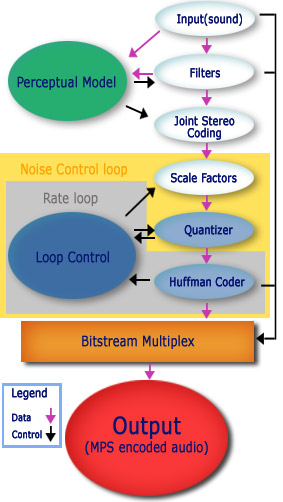
Perceptual Model
This part of the encoder (sometimes referred to as a Psychoacoustical Model or the Masking Model) analyzes the incoming signal and outputs values based on well-known pyschoacoustical phenomena. This is a critical stage and has a large play in the overall quality of the encoder.
It has two parts. First it processes the signal with a 1024 point FFT
. Second, the resulting information (phase and amplitude) is analyzed.
From this analysis, the Perceptual Model then accomplishes its two main functions. First, it tells the MDCT
whether to use long or short windows. Essentially, it looks for transients, sharp frequency spikes that often occur at the onset of a sound. Transients equal shorter windows, steadier sounds equal long windows. Second, it looks for frequencies that might be masked
and outputs a masking threshold to the quantizer.